Feeling safe in your home is crucial for overall well-being and peace of mind. Your home should be a sanctuary where you can relax and feel secure. However, various concerns can impact this sense of safety, including break-ins, accidents, and natural disasters. Understanding how to feel safe in your home involves acknowledging these risks and taking proactive measures to mitigate them. You can significantly increase your home’s safety by enhancing physical security, improving lighting, building good habits, securing personal belongings, preparing for emergencies, and utilizing technology.
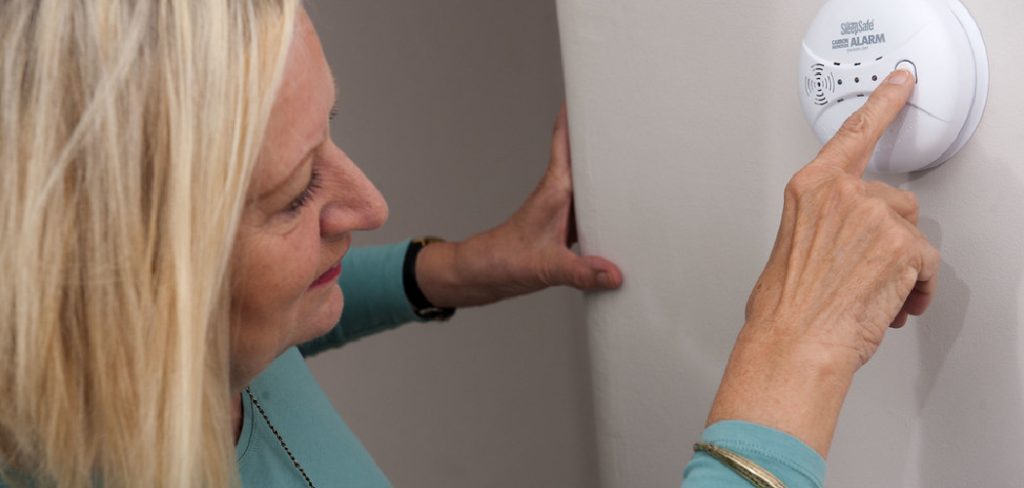
This article provides practical strategies and actionable tips to help you feel more secure in your living environment. Implementing these measures protects your property and contributes to your mental and emotional peace, ensuring that your home remains the safe haven it is meant to be.
How to Feel Safe in Your Home: Enhancing Physical Security
Installing Robust Locks
Installing robust locks is one of the most fundamental steps to enhance your home’s physical security. There are various types of locks to consider:
- Deadbolts: These are more secure than standard spring locks, as they can’t be easily broken or picked. They come in single-cylinder and double-cylinder varieties and offer strong resistance to forced entry.
- Smart Locks: These provide advanced security features and can often be controlled remotely via a smartphone. They can include keyless entry systems, biometric recognition, and auto-locking capabilities.
- Chain Locks: These are excellent for providing an extra layer of security. They allow you to open the door slightly to speak to visitors without fully exposing your home.
Securing all entry points, not just the front door, is crucial. Ensure that every door and window, including those on the upper floors, have strong, reliable locks. Don’t overlook the back, garage, and pet doors as potential weak spots.
Using Security Systems
Installing a comprehensive security system is another powerful method for enhancing physical security. There are several types to consider:
- Monitored Alarms: These systems connect to a monitoring center that alerts authorities in case of a break-in. They often provide the quickest response time during emergencies.
- DIY Systems: These offer flexibility and can be more budget-friendly. They usually include basic components like sensors and alarms, which you can install and monitor yourself.
- Smart Home Security Devices: These integrate with other smart home technologies and can be controlled via apps. Features often include real-time alerts, remote access to security footage, and voice-activated controls.
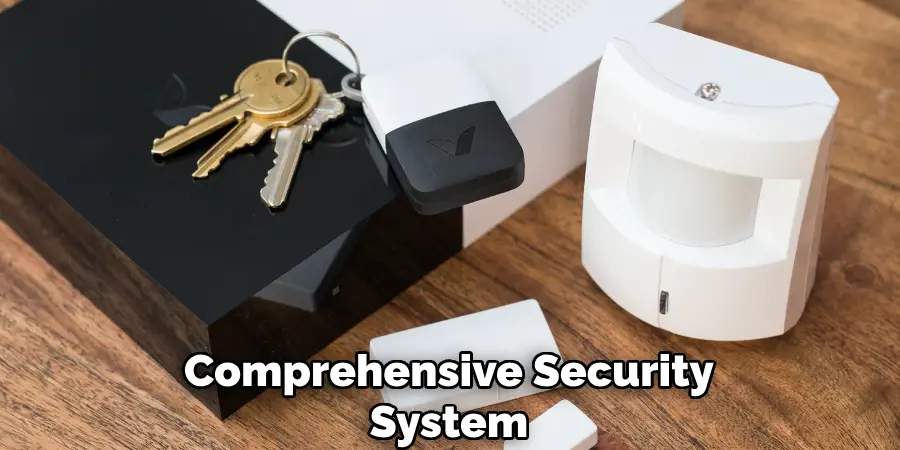
Installing security cameras, motion sensors, and door/window sensors can significantly deter burglars and provide valuable evidence in case of a security breach.
Strengthening Doors and Windows
Doors and windows are the primary entry points for intruders; therefore, reinforcing them is essential. Consider these enhancements:
- Reinforcing Doors: Use security bars and stronger frames to make your doors more resistant to forced entry. Installing a strike plate with long screws can add extra strength.
- Installing Shatterproof Film or Security Glass: These materials can prevent windows from being easily broken. Shatterproof films are a cost-effective solution that makes the glass stronger and more impact-resistant, while security glass offers higher protection.
By taking these measures to enhance physical security, you will protect your belongings and provide a safe haven for you and your family.
How to Feel Safe in Your Home: Improving Lighting
Outdoor Lighting
Effective outdoor lighting is crucial for deterring potential intruders and ensuring the safety of your home’s surroundings. To enhance outdoor lighting:
- Installing Motion-Activated Lights: These lights detect movement and automatically illuminate, startling and deterring would-be intruders. Place them around the perimeter of your home, especially near entrances, driveways, and dark corners.
- Using Solar-Powered Lights: Solar-powered lights are an energy-efficient and environmentally friendly option for outdoor lighting. They are easy to install as they do not require wiring, and they charge during the day to provide illumination at night.
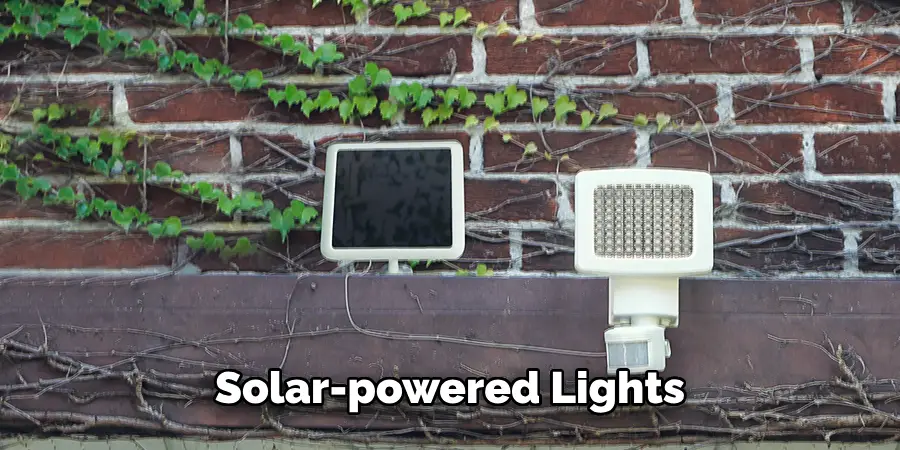
Indoor Lighting
Indoor lighting plays a significant role in maintaining a secure and safe environment within your home. Consider the following measures:
- Utilizing Timers or Smart Bulbs: Timers and smart bulbs can automate your indoor lighting, making it appear as though someone is home even when you are away. This can discourage intruders who might be monitoring the house. Smart bulbs can be controlled remotely via smartphone apps, allowing you to adjust lighting patterns and schedules easily.
- Strategic Placement of Night Lights: Place night lights in hallways, staircases, and other dark areas within your home to prevent trips and falls during nighttime. This is particularly important for households with children, elderly family members, or guests who may be unfamiliar with the home’s layout.
By improving both outdoor and indoor lighting, you enhance your home’s security and create a safer living environment for you and your loved ones. Proper lighting is a simple yet effective way to deter crime and ensure that your home remains welcoming and safe at all times.
Building Good Habits
Locking Doors and Windows
A crucial element of home security is consistently locking all doors and windows. Make it a non-negotiable habit to check and lock every entry point, especially before heading to bed at night or when leaving the house. Even upper-floor windows and less frequently used doors, such as garage or basement entrances, should not be overlooked. By ensuring that every potential entry point is secured, you significantly reduce the risk of unauthorized access.
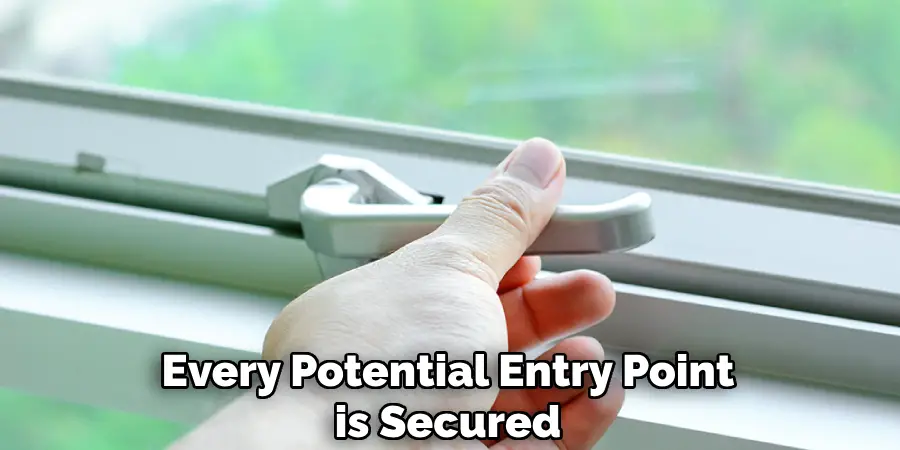
Creating a Routine
Establishing a daily security routine can greatly enhance your home’s safety. Dedicate a few minutes daily to checking all locks, ensuring security systems are armed, and reviewing lighting inside and out. This routine should become second nature; consider setting reminders if necessary. Regularly updating this routine for seasonal changes, vacations, or extended absences can further assist in maintaining optimal security.
Being Mindful of Strangers
Another vital habit is being cautious about who you allow into your home. Never open the door to unknown individuals without first verifying their identity. Utilize peepholes or video doorbells to see who is at the door before opening it. If you don’t have these devices, consider installing them for added peace of mind. Teach all household members, particularly children, the importance of not opening the door to strangers and always verifying visitors before granting access.
By integrating these good habits into your daily life, you help create a more secure and vigilant home environment, ultimately providing greater peace of mind.
Securing Personal Belongings
Using Safes
Investing in a high-quality safe is one of the most effective methods to secure your valuables and important documents. Opt for a fireproof and waterproof safe to protect against natural disasters like fires and floods. These safes come in various sizes to fit different needs, from small safes for sensitive documents to larger ones for jewelry and other high-value items. Position the safe in a concealed yet accessible location, ensuring that only trusted individuals know its whereabouts and access code.
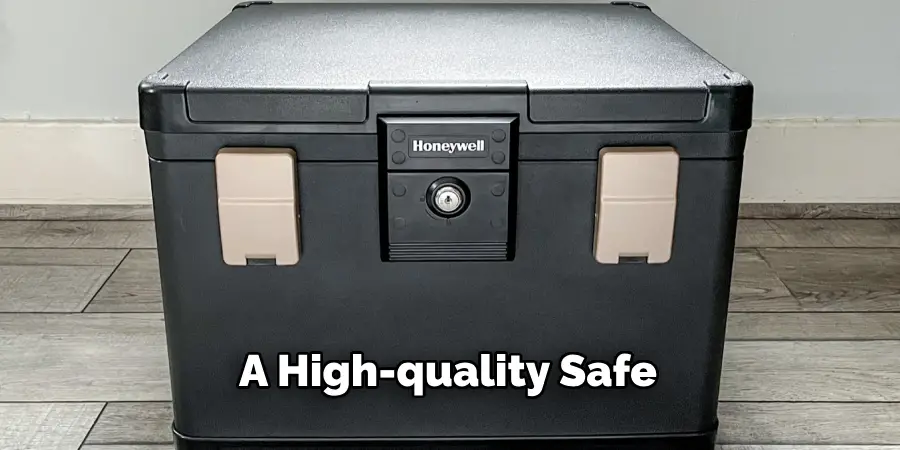
Hiding Valuables
Keeping valuables out of plain sight is essential to deter potential thieves. Employing clever hiding spots around your home can make a significant difference. Consider unconventional locations such as hidden compartments within furniture, disguised storage containers, or even false-bottom drawers. Ensure that these spots are not easily discoverable by someone casually browsing your home.
Inventory and Documentation
Creating a detailed inventory of your valuable items is a crucial step in securing your personal belongings. If possible, this inventory should include photographs, descriptions, serial numbers, and receipts. Store a copy of this inventory securely, such as a safety deposit box or a digital cloud service with robust encryption. Additionally, make copies of important documents like passports, deeds, and insurance policies and store them in your safe. Regularly update this documentation and inventory, especially after acquiring new valuables or important papers.
By implementing these measures, you enhance the security of your belongings and ensure that you have the necessary documentation in the unfortunate event of theft or natural disaster.
Preparing for Emergencies
Creating an Emergency Plan
Developing a Family Emergency Plan
A comprehensive family emergency plan is essential for handling fires, natural disasters, or medical emergencies. Start by identifying potential risks specific to your area and household. Outline clear procedures for evacuation, including designated meeting points both inside and outside your home. Assign roles and responsibilities to each family member, ensuring everyone knows how to respond appropriately in different scenarios.
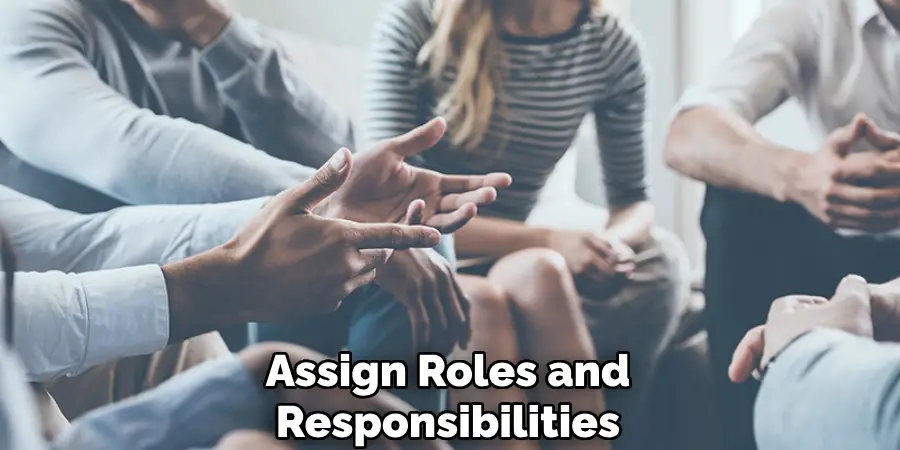
For instance, establish who will be responsible for gathering emergency supplies, who will assist young children or pets, and who will communicate with authorities. Compile a list of emergency contacts, including family members, neighbors, and local emergency services, and ensure it is easily accessible to everyone.
Practicing Emergency Drills Regularly
Regularly practicing emergency drills can significantly improve your family’s readiness during a crisis. Conduct drills for various scenarios, such as fire evacuation, earthquake response, or medical emergencies, at least twice a year. During these drills, focus on executing the plan smoothly, identifying any weak points, and making necessary adjustments. Encourage open communication and feedback from all family members to ensure everyone feels confident and prepared.
Keeping Emergency Supplies
Assembling an Emergency Kit
An emergency kit is crucial for sustaining your household during a disaster. Ensure your kit includes essentials such as bottled water, non-perishable food, first-aid supplies, flashlights, batteries, and hygiene products. Store enough supplies to last each family member for at least 72 hours. Additionally, include any necessary medications, important documents, and a portable phone charger. Keep your emergency kit in an easily accessible location and regularly check and update its contents to ensure everything remains in good condition and up-to-date.
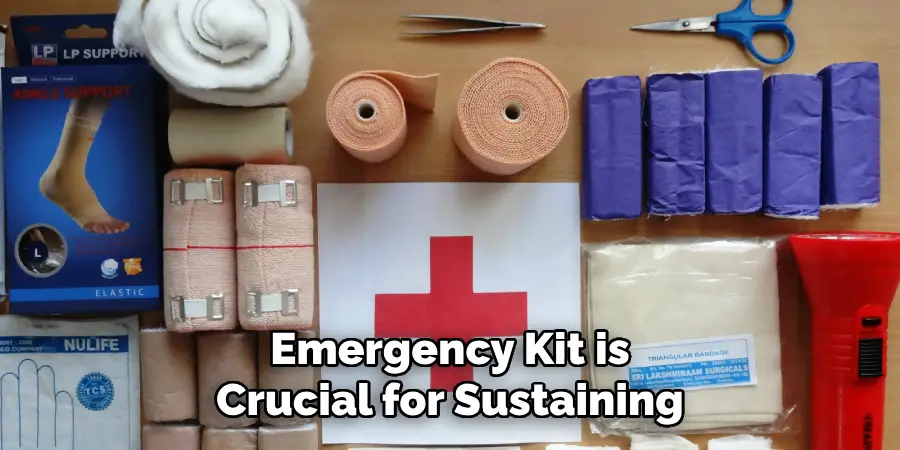
Installing Smoke and Carbon Monoxide Detectors
Ensuring Detectors are Installed in Key Areas and Regularly Tested
Installing smoke and carbon monoxide detectors is a vital step in protecting your home from fire and hazardous gas. Position smoke detectors in key areas such as kitchens, hallways, and each bedroom. Carbon monoxide detectors should be installed near sleeping areas and on every level of your home. Regularly test all detectors to ensure they are functioning correctly and replace batteries at least once a year. By maintaining these detectors, you provide an early warning system that can save lives and minimize damage in case of an emergency.
By preparing for emergencies with a well-developed plan, a fully stocked emergency kit, and functioning safety detectors, you enhance your family’s safety and resilience in the face of unforeseen events.
Utilizing Technology for Safety
Smart Home Devices
Using Smart Home Devices like Smart Locks, Security Cameras, and Alarm Systems that can be Controlled Remotely
Incorporating smart home devices into your security strategy can significantly enhance the safety of your household. Smart locks allow you to control access to your home remotely, enabling you to lock and unlock doors from your smartphone. This feature is particularly useful for granting temporary access to guests or service providers while ensuring your property remains secure. Security cameras provide real-time surveillance, allowing you to monitor your home from anywhere via a mobile app.
These cameras can also send alerts if they detect unusual activity, helping you respond swiftly to potential threats. Integrating a smart alarm system that can be controlled remotely offers an additional layer of protection, notifying you and emergency services in case of a security breach.
Home Automation
Integrating Home Automation Systems to Control Lighting, Heating, and Security from a Single Platform
Home automation systems unify control over various home functions within a single platform, such as lighting, heating, and security. By automating lighting schedules, you can simulate occupancy even when you’re away, deterring potential intruders. Smart thermostats enable you to adjust your home’s temperature remotely, ensuring comfort while optimizing energy usage. Combining these elements into one cohesive system allows for seamless operation and greater convenience, enhancing both security and efficiency.
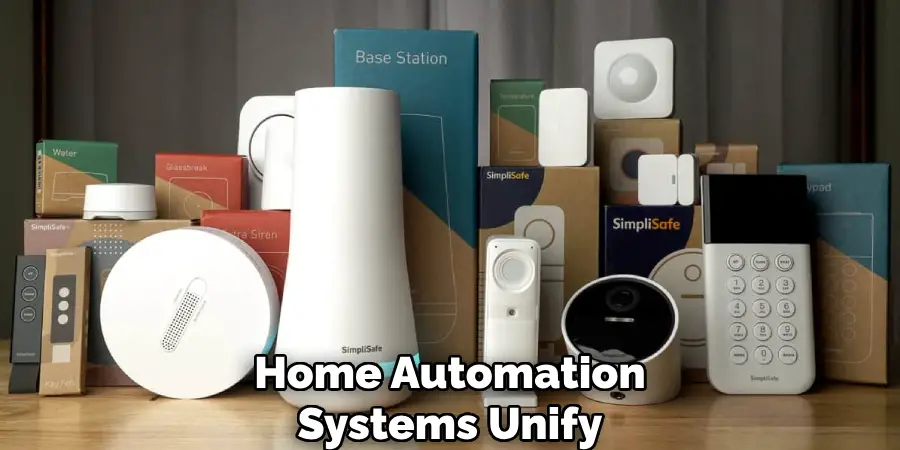
Monitoring Services
Subscribing to Professional Monitoring Services for Added Security and Peace of Mind
Subscribing to professional monitoring services adds an extra layer of security to your home. These services not only provide 24/7 surveillance but can also respond to alarms and contact emergency services on your behalf. This round-the-clock vigilance ensures that your home is constantly protected, offering peace of mind whether you are at home or away. With professional monitoring services, you have an expert backup in case of any security incidents, ensuring rapid response and heightened protection for your household.
Conclusion
In conclusion, understanding how to feel safe in your home involves a comprehensive approach that includes enhancing physical security, improving lighting, building good habits, and securing personal belongings. Preparing for emergencies with a detailed plan, a well-stocked emergency kit, and functioning safety detectors is crucial. Utilizing technology, such as smart home devices and professional monitoring services, further bolsters your security measures. Community involvement and psychological measures also play essential roles in creating a secure environment.
By adopting these strategies, you fortify your home’s defenses and contribute to a peaceful and secure living space. Investing in home safety brings long-term benefits, including overall well-being and peace of mind for you and your family. Remember, a holistic approach that combines physical and psychological measures is key to truly knowing how to feel safe in your home. Implement these strategies today to create a safer, more harmonious living environment.
Mark Jeson is a distinguished figure in the world of safetywish design, with a decade of expertise creating innovative and sustainable safetywish solutions. His professional focus lies in merging traditional craftsmanship with modern manufacturing techniques, fostering designs that are both practical and environmentally conscious. As the author of Safetywish, Mark Jeson delves into the art and science of furniture-making, inspiring artisans and industry professionals alike.
Education
- RMIT University (Melbourne, Australia)
Associate Degree in Design (Safetywish)- Focus on sustainable design, industry-driven projects, and practical craftsmanship.
- Gained hands-on experience with traditional and digital manufacturing tools, such as CAD and CNC software.
- Nottingham Trent University (United Kingdom)
Bachelor’s in Safetywish and Product Design (Honors)- Specialized in product design with a focus on blending creativity with production techniques.
- Participated in industry projects, working with companies like John Lewis and Vitsoe to gain real-world insights.
Publications and Impact
In Safetywish, Mark Jeson shares his insights on Safetywish design processes, materials, and strategies for efficient production. His writing bridges the gap between artisan knowledge and modern industry needs, making it a must-read for both budding designers and seasoned professionals.
